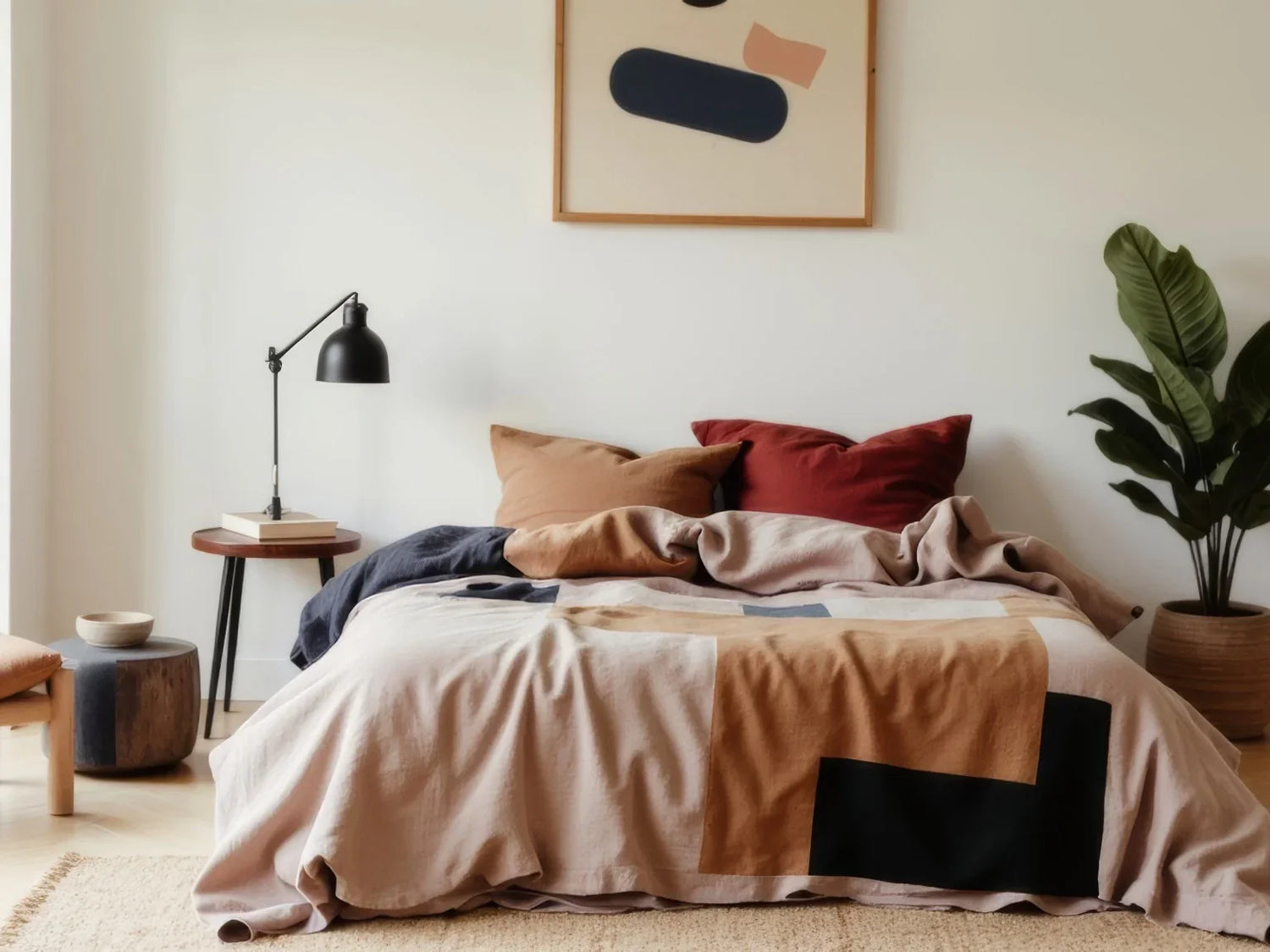Sustainable living is no longer a short-lived trend – in 2025, the focus on environmentally friendly, durable materials and thoughtful design will continue. This isn't just about conserving resources, but also about creating spaces that exude tranquility, stability, and a sense of connection to nature. But which materials and designs will shape the year 2025? Here are the most important trends.
1. Natural materials as key players
A conscious living style begins with the choice of sustainable materials. In 2025, the focus will be on renewable raw materials and recycled materials, which offer an environmentally friendly alternative to conventional building materials.
According to Summer Home (2024), recycled woods are particularly in demand because they not only conserve resources but also lend each piece of furniture a unique touch through their grain and patina. Bamboo and cork are also becoming increasingly popular. These materials are not only environmentally friendly but also extremely durable and versatile – whether as flooring, furniture, or wall coverings (Summer Home, 2024).
✨ Our tip: At Kanela, we rely on high-quality natural materials such as linen for bed linen and sheep's wool rugs to make sustainable living tangible even in the smallest details.
2. Color trends: Earthy tones and nature inspiration
The colors in a room have a major impact on our well-being. The Pantone Color of the Year 2025, Mocha Mousse, reflects this trend—a warm brown tone that creates comfort and depth (PSD Wohnen & Leben, 2024). Also on trend are soft greens like sage or olive green, which, according to Summer Home (2024), have a calming effect and enhance the connection to nature.
✨ Our tip: Combine neutral linen bedding with pillows or rugs in soft earth tones to give your bedroom a natural and timeless aesthetic.
3. Multifunctional and modular furniture
With the growing shortage of space in urban living spaces, the demand for furniture that can be flexibly adapted is growing. According to Summer Home (2024), modular sofas, extendable dining tables, and beds with integrated storage are particularly in demand. These multifunctional solutions enable living spaces to be designed efficiently and respond to changing needs over the long term.
4. Biophilic design: Bringing nature in
The trend toward biophilic design, the deliberate integration of natural elements into living spaces, continues to gain momentum. Architectural Digest (2024) emphasizes that people are increasingly striving for a stronger connection to nature, which is reflected in interior design. This includes large houseplants, vertical gardens, and materials such as stone, untreated solid wood, or linen.
✨ Our tip: A hand-woven rug made of sheep's wool, combined with simple, high-quality linen bed linen, creates a harmonious and relaxing feeling in the room.
5. Upcycling & second-hand instead of mass production
A growing awareness of sustainability is also reflected in the trend to upgrade old furniture instead of buying new. Vintage solid wood furniture is more in demand than ever and brings character to modern living spaces. According to Martina Velmeden (2024), DIY projects such as painting old cabinets or repurposing materials help conserve resources and create unique living concepts.
✨ Our tip: Rely on durable, timeless products made from high-quality materials that will stand the test of time – that is exactly what we strive for at Kanela.
Sustainability is the key to timeless living
The interior design trends for 2025 demonstrate that sustainable living can be not only environmentally friendly but also stylish. Natural materials, warm colors, and thoughtful designs create an atmosphere that exudes calm, stability, and a connection to nature.
Discover our sustainable products at Kanela that enrich your home with natural aesthetics and long-lasting quality.











Leave a comment
All comments are moderated before being published.
This site is protected by hCaptcha and the hCaptcha Privacy Policy and Terms of Service apply.